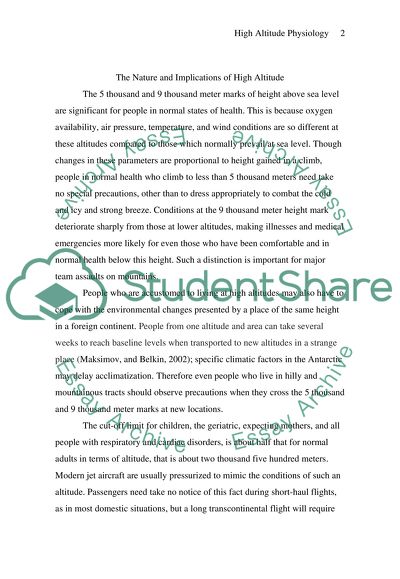Cite this document
(“THE PHYSIOLOGY OF TRANSFER TO ALTITUDE. ADVICE TO TRAVELLERS Essay”, n.d.)
THE PHYSIOLOGY OF TRANSFER TO ALTITUDE. ADVICE TO TRAVELLERS Essay. Retrieved from https://studentshare.org/miscellaneous/1538885-the-physiology-of-transfer-to-altitude-advice-to-travellers
THE PHYSIOLOGY OF TRANSFER TO ALTITUDE. ADVICE TO TRAVELLERS Essay. Retrieved from https://studentshare.org/miscellaneous/1538885-the-physiology-of-transfer-to-altitude-advice-to-travellers
(THE PHYSIOLOGY OF TRANSFER TO ALTITUDE. ADVICE TO TRAVELLERS Essay)
THE PHYSIOLOGY OF TRANSFER TO ALTITUDE. ADVICE TO TRAVELLERS Essay. https://studentshare.org/miscellaneous/1538885-the-physiology-of-transfer-to-altitude-advice-to-travellers.
THE PHYSIOLOGY OF TRANSFER TO ALTITUDE. ADVICE TO TRAVELLERS Essay. https://studentshare.org/miscellaneous/1538885-the-physiology-of-transfer-to-altitude-advice-to-travellers.
“THE PHYSIOLOGY OF TRANSFER TO ALTITUDE. ADVICE TO TRAVELLERS Essay”, n.d. https://studentshare.org/miscellaneous/1538885-the-physiology-of-transfer-to-altitude-advice-to-travellers.


